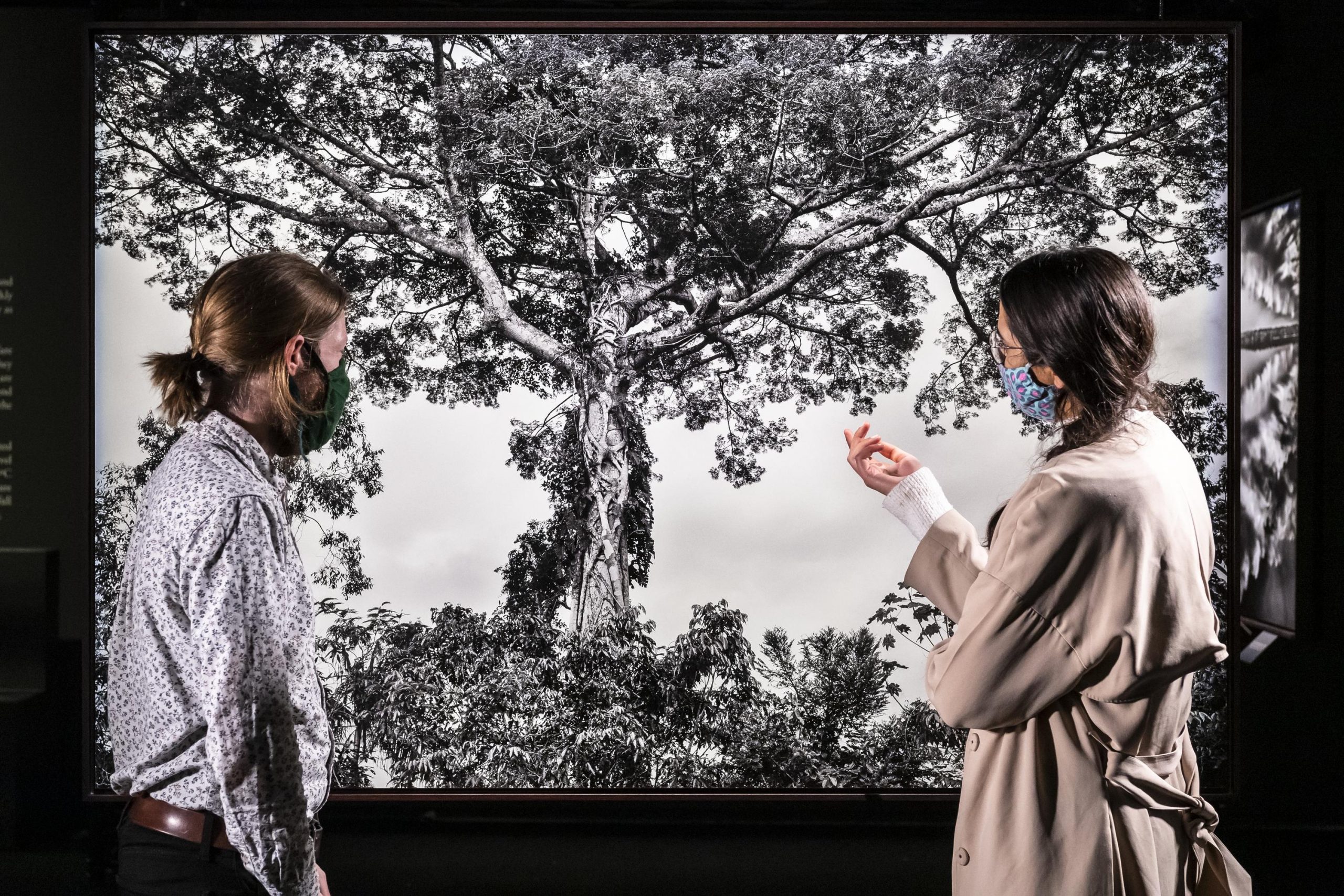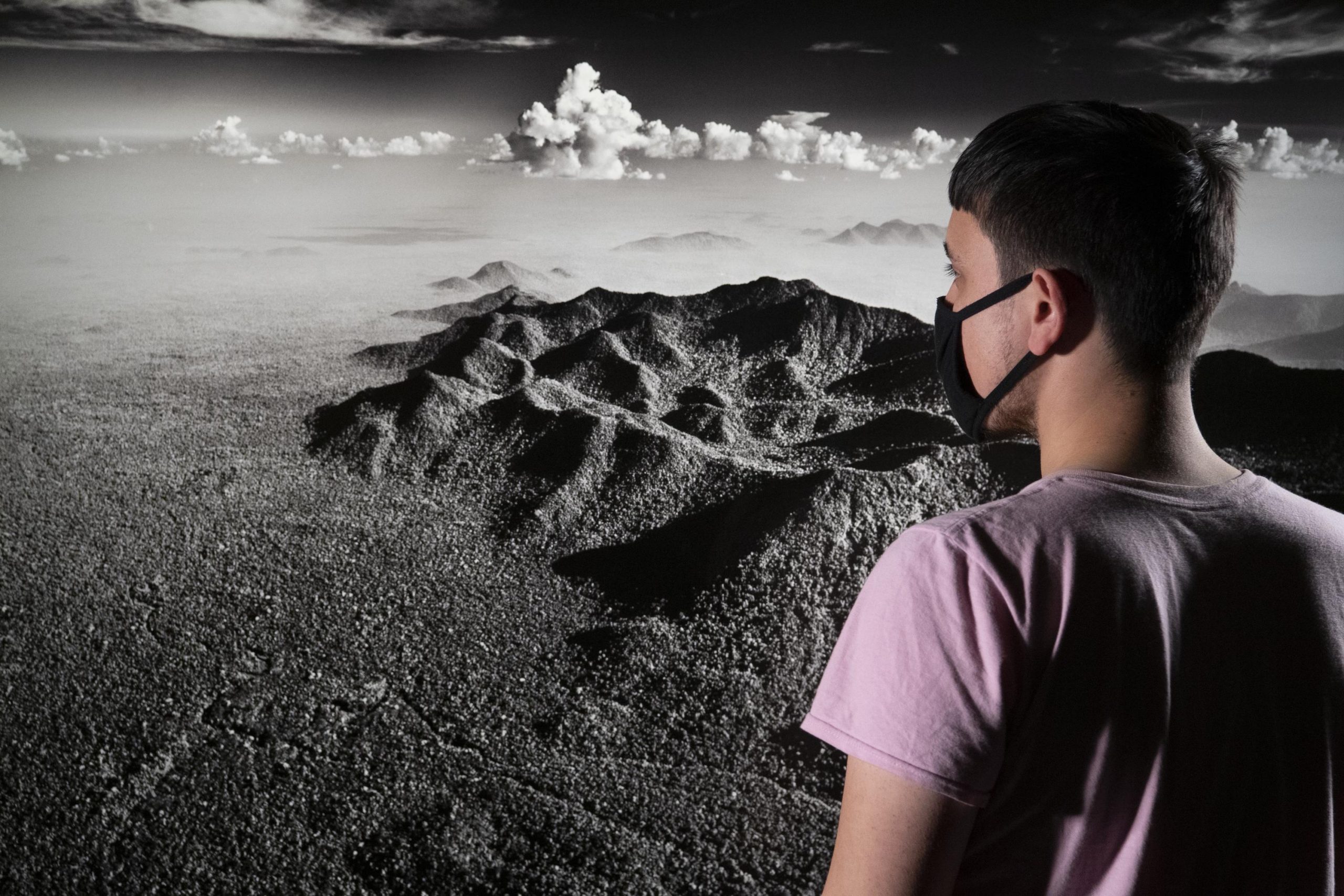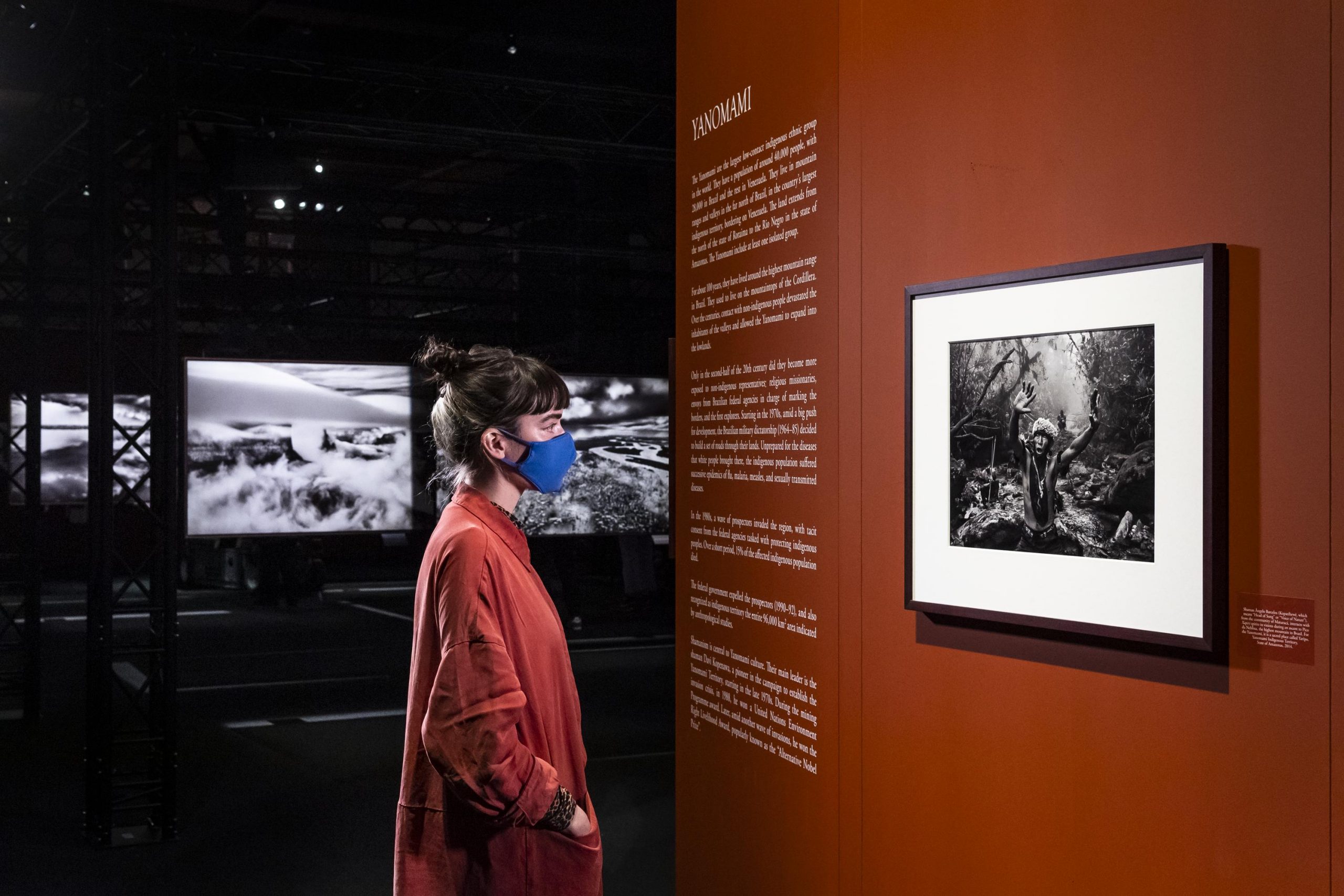To step past the ticket desk and into the anteroom of Sebastião Salgado’s Amazônia is to engage in an act of translation.
The introductory video informs you of the urgency of climate action to save the Amazon rainforest – the imperilled lungs of the Earth. This anteroom leads to the exhibition space, where images dangle and dance before the eyes in semi-darkness, their white highlights almost too bright to dwell on.

The soundtrack envelops you, evoking bird song, the forces of nature and the pulsating life force that persists in this topography that must be saved. Here, in this almost magical combination of information, maps, music by Jean Michel Jarre, and, of course, Salgado’s iconic photography, visitors cross a threshold as they move through a veritable forest of photographs.
Amazônia is the latest of many collaborative efforts between Sebastião and his wife Lèlia Wanick Salgado. Their shared mission is to celebrate the richness, diversity, and absolute necessity of the Amazon rainforest through the magic of his photography and her visionary curatorial and aesthetic skills.

In his book What Do Pictures Want? (2006), WJT Mitchell writes of the persuasive power of images, their iconic, even totemic, force to influence hearts and minds. If images need frames, contexts, and captions to be meaningful in time and place, then these are all reinforced here through the music, the voices of indigenous people, the semi-lit, womb-like setting of the exhibition where the frailty of planetary existence is sensed to hang in the balance.
Building on his earlier project Genesis, from which several images are on display here, and their shared ecological project to repopulate the Atlantic rainforest at Instituto Terra, Amazônia presents photography as high art precisely to showcase the medium’s earthly and educational mission in ways that ensure an afterlife in the memory and the imagination of visitors.

To visit Amazônia is to journey through the ever so delicate and tangled nexus of environmental education and aesthetic revelation where new perspectives come to light. The photographs celebrate the rainforest’s contours, the rise and fall of humid vapour, its rivers that appear as giant snakes on the mountain flanks, its trees, warm rain, its birdsong, its rivers with their banks as wide as a beach, its light and shade, its plants, its people, its skies.
We discover the Amazon as a living, dynamic, and globally vital composite of connections interweaving the indigenous communities with the landscapes within which they make their homes, the sheer magic of rivers that fly and the trees that gift us the oxygen that keeps us all alive.

We emerge from this exhibition impacted by a region that many of us may never have visited. We experience a kind of multi-sensory translocation, a process of translation, taken in its literal sense of crossing over to the other side. This moves visitors to heightened environmental awareness, so that we no longer ‘look at` the images, but traverse them, as if the exhibition, with its sensory impacts, were a process that reshaped us. The effect is deliberate and carefully constructed, for translocation is a form of translation — and translation, as Mireille Gansel has insightfully reminded us, is the condition upon which regeneration can take place.
Photography is always a medium that raises many questions and offers many perspectives. Its uses cross the domains of visual control, framing, revealing, preserving, and invoking. Most of all, the aesthetic power of photography can engage us both mentally and emotionally. Amazônia achieves what great performances do. A carefully constructed choreography of large-scale photographs, music, lighting, and spatial arrangement, stages the biodynamics of the Amazonian rainforest as visitors walk through the exhibition. The images pursue us long after we have left and, with this, we take with us the absolute urgency of saving the rainforest and its people if only to save ourselves.

Constructed with magisterial skill, Salgado’s work crosses many domains, those of high art, activism, and documentary, to mention only a few. Amazônia exemplifies these if only to invite its viewers to engage in the act of crossing, or self-translation into environmental wonderment. It is photography at its most joyful, precisely to frame that unspeakable tragedy of planetary loss that we choose too often to ignore. It is for viewers to see the world and themselves from the point of view of the rainforest and to jointly be able to say ‘we exist!’
After a successful run at the Science Museum in London, Amazônia is on at the Science and Industry Museum in Manchester from 13 May – 14 August 2022. Book tickets now.
Parvati Nair’s book A Different Light: The Photography of Sebastião Salgado is the first book-length study of this great photographer’s work.
